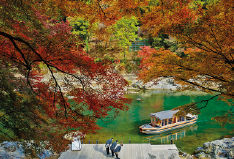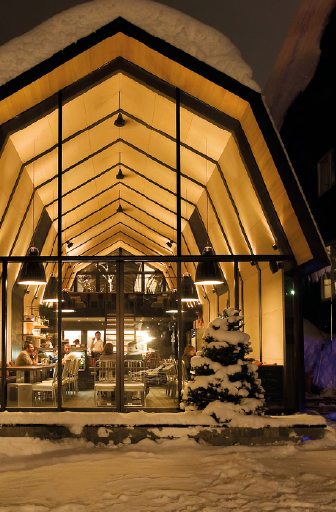Birthplace of minimalism and the omotenashi ( Japanese hospitality) concept, Japan has always been a tourists’ favourite. Here are eight new hotels that offer the best of Japanese design and heritage.




HOSHINOYA KARUIZAWA, NAGANO

As a sustainable resort, Hoshinoya Karuizawa is 75 per cent self-sufficient energy-wise, has a mandatory recycling programme, and promotes protection of the local wilderness.

SHIKI JUR AKU, KYOTO

Each house is designed differently. The Ichi-Go house features a Japanese cypress bath and a view of the garden, whereas Nana-Go features a tatami room and antique furniture.


HOSHINOYA KYOTO, KYOTO


Must know
The woodblock-printed paper in the rooms were made by Takeo Honjo, the master printmaker who has created paper for the Nijo Castle restoration, as well as Detached Palace.

RYOKAN S ANGA, KUMAMOTO

Must know
Kurokawa Onsen is famed as a hot spring destination, with a town centre that is easily explored on foot. To keep its traditional atmosphere, no concrete buildings have been built here.

HOSHINOYA TAKETOMI ISL AND, OKINAWA
The well-thought-out architecture of this island resort was informed by the lifestyles and beliefs of the Taketomi natives. Designed by Azuma Architect & Associates, the space features windows by the baths so guests can enjoy yard views, as well as Gukku walls which allow guests privacy. Outdoors, the white sand gardens consist of glimmering crushed corals, while the trees have been strategically planted to block strong wind. Each pavilion roof also features the evilwarding shisa (Okinawan for lion), made using leftover materials from the tiledroof construction. A visit to the library and spa will complete the experience.
Must know
Only 350 people live on this small island, so the blue waters are all yours to enjoy. Taketomi island is also on the government issued list of preserved districts.

TRUNK, TOKYO
Two philosophies permeate this 15-room hotel: eco-friendliness and using as many made-in Japan items as possible. Mount Fuji Architects Studio gave Trunk a geometric grey stone facade enhanced by upcycled wood and lush greenery, while Jamo Associates designed contemporary minimalist rooms that are accessorised with local art. Furniture with weathered leather finishes and characteristic wood grain, by Osaka brand Truck, exudes a home-away-fromhome ambience. Hungry for a snack? Drop by the hotel’s own convenience store. Feel like it’s the perfect time to get married? You’ll love the wood and glass chapel on the roof terrace.
Must know
The upcycled bicycles, wine by Tokyo’s Fujimaru Winery, and fruit from a local shop keep the hotel’s carbon footprint low.

AMANEMU, MIE
Amanemu’s idyllic location at Ise Shima National Park is the perfect place to soak up the sights. The low-slung tiled roofs let tourists catch sunsets, while the floor-to-ceiling windows open to unobstructed views of Ago Bay or romantic maple and cherry trees. Inside, a classic ryokan aesthetic — light-coloured Japanese timber, woven textiles, and basalt stone tiles in the bathrooms — puts you in a restful mood. Two of the villas come with private onsen.
Must know
Amanemu keeps true to ryokan traditions with an “okami”, a female manager who has been honed in the art of Japanese hospitality.

KIMAMAYA, HOKKAIDO
This hotel’s name, Kimamaya, translates to “be yourself”. With a toasty fireplace that encourages you to put your feet up and sip some hot chocolate, we say this invitation is hardly necessary. Owned by Odin Property, this nine-room mountain lodge was redesigned in 2009 to combine the classic features of a Nordic chalet with the zen and eco-consciousness of Japanese design. Architect Koichi Ishiguro made sure to use sustainable and recyclable materials, and created rooms that exude laidback luxury. The chocolate-hued wood and elm floors add to the cosiness, and the premium down bedding and cotton linen are perfect for unwinding in, after a day in the mountains.
Must know
No stay at Kimamaya is complete without a dining experience at the gorgeous Barn by Odin, whose design was inspired by the architecture of a Hokkaido barn. It uses fresh ingredients and serves craft beer from Hokkaido.
Check it out at www.designhotels.com.























